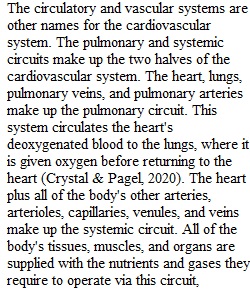


Q Presentation for Teaching BIO106 To support your income as you complete your coursework at CSU Global, you have accepted a position to teach BIO106: Applied Anatomy and Physiology at Sunshine Technical College. Your students have just completed a unit on the cardiovascular system but are struggling to understand the difference between the cardiovascular system and the structure and function of the lymphatic system. For this assignment option, create a presentation in which you compare and contrast the cardiovascular system and the lymphatic system. Describe the importance of the lymphatic system in the immune response. Include a discussion that compares the functions, structures, cells, fluids, and circulation of each. Requirements: Create a presentation. Presentation You will find resources focused on helping you create your visual presentations on the Visual Presentation page located in the CSU Global Writing Center. Develop an 8-10-slide presentation, not including the title and reference slides, which are required. Your presentation MUST include your script notes containing 80-100 words per slide. Conform to APA guidelines in the CSU Global Writing Center. Include a formal references page with at least two scholarly references in addition to the course textbook. The CSU Global Library is a good place to find these references. If you create your presentation using Prezi, SlideShare, or some other web-based presentation tool, you will need to copy the link to your presentation with script notes and paste it into a Word document with a brief note to your instructor regarding the link and any special instructions for viewing your project once opened.
View Related Questions